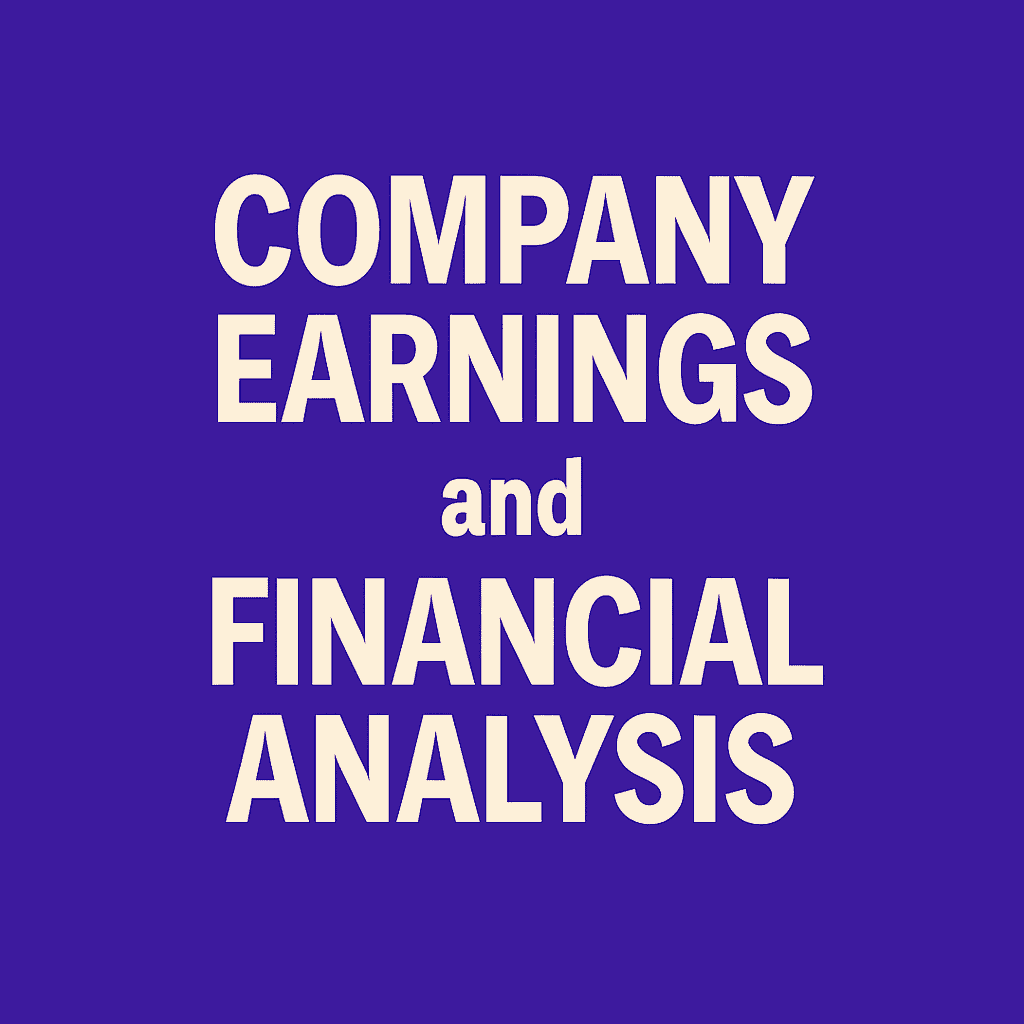Walmart Inc. (NYSE: WMT)
Q2 FY2026 Financial Analysis | August 21, 2025
Executive Summary
Walmart reported strong second-quarter fiscal 2026 results, with revenue growth of 4.8% to $177.4 billion, or 5.6% in constant currency. The company achieved global eCommerce growth of 25% with digital mix increasing across all segments. Walmart U.S. comparable sales grew 4.6% with strong performance in grocery and health & wellness. Despite increased investments and higher self-insured general liability claims, the company delivered adjusted EPS of $0.68 and raised its full-year outlook for both net sales and earnings per share.
Q2 FY2026 Highlights
Financial Performance
Walmart’s second quarter fiscal 2026 performance demonstrated the company’s continued momentum, with total revenue growing 4.8% to $177.4 billion, or 5.6% when excluding foreign exchange impacts. This growth was driven by strong performance across all business segments, with particular strength in eCommerce and omnichannel offerings that resonated with customers seeking convenience and value.
Operating income declined 8.2% to $7.3 billion due to discrete legal and restructuring costs totaling approximately $590 million. On an adjusted basis, operating income increased 0.4% in constant currency, reflecting strong sales performance and continued execution of the company’s financial framework. The decline was also impacted by approximately 560 basis points from higher self-insured general liability claims expense.
GAAP earnings per share increased dramatically to $0.88 from $0.56 in the prior year, primarily driven by net gains on equity and other investments of $2.7 billion. Adjusted EPS of $0.68 represented a modest 1.5% increase, excluding the effects of investment gains, legal matters, and restructuring charges. This performance exceeded expectations despite the headwinds from increased claims expense.
Gross margin improved by 4 basis points to 24.5%, led by Walmart U.S. performance. The improvement reflects the company’s disciplined approach to pricing and inventory management, as well as the benefits of its growing higher-margin businesses including advertising and membership income, which grew 46% and 5.4% respectively.
Strong cash generation continued with operating cash flow of $18.4 billion, an increase of $2.0 billion year-over-year. Free cash flow reached $6.9 billion, up $1.1 billion, demonstrating the company’s ability to generate substantial cash while investing in growth initiatives. This strong cash performance supported the company’s capital allocation priorities, including $6.2 billion in share repurchases year-to-date.
Segment Performance
| Segment | Net Sales ($B) | YoY Change | Comp Sales Change | Operating Income ($B) |
|---|---|---|---|---|
| Walmart U.S. | $120.9 | +4.8% | +4.6% | $6.7 |
| Walmart International | $31.2 | +5.5% | +10.5% (cc) | $1.2 |
| Sam’s Club U.S. | $23.6 | +3.4% | +5.9% | $0.5 |
Walmart U.S. delivered strong performance with net sales increasing 4.8% to $120.9 billion and comparable sales growth of 4.6%. The segment benefited from market share gains across key categories, with customers responding positively to increased convenience through eCommerce and omnichannel offerings, as well as expanded rollback pricing initiatives.
eCommerce sales in the U.S. accelerated with 26% growth, reflecting strength in store-fulfilled delivery, advertising, and marketplace operations. Store-fulfilled delivery channels grew nearly 50%, with approximately one-third of orders expedited. Operating income increased 2.0% to $6.7 billion despite a 620 basis point headwind from increased self-insured general liability claims expense.
Walmart International showed solid momentum with net sales of $31.2 billion, up 5.5%, or 10.5% in constant currency. Growth was led by strong performance in China, Walmex, and Flipkart, with transaction counts and unit volumes increasing across markets. eCommerce sales grew 22%, driven by store-fulfilled pickup & delivery and marketplace expansion.
Operating income in the International segment declined 9.8% to $1.2 billion, affected by strategic growth investments in India, Canada, and Mexico. Currency rate fluctuations negatively impacted sales by $1.5 billion and operating income by $0.1 billion, highlighting the segment’s exposure to foreign exchange volatility.
Sam’s Club U.S. continued its strong trajectory with net sales of $23.6 billion, up 3.4%, and comparable sales growth of 5.9%. The segment was led by grocery and health & wellness categories, with continued momentum in general merchandise sales. eCommerce sales increased 26% with strong growth in club-fulfilled pickup & delivery services.
Sam’s Club operating income was impacted by $80 million in strategic supply chain reorganization charges, resulting in a 15.8% decline to $0.5 billion. On an adjusted basis, operating income declined only 2.1%, though this was still affected by approximately 710 basis points from higher general liability claims expense. Membership income grew 7.6% with steady increases in member counts, renewal rates, and Plus members.
eCommerce & Digital Transformation
Walmart’s digital transformation continued to accelerate in Q2 FY2026, with eCommerce serving as a key growth driver across all segments and geographic markets:
Global eCommerce Performance
- Global Growth: eCommerce sales increased 25% globally, led by store-fulfilled pickup & delivery and marketplace expansion
- Walmart U.S.: 26% eCommerce growth with store-fulfilled delivery growing nearly 50%
- International Markets: 22% eCommerce growth with digital mix increasing across all markets
- Sam’s Club: 26% eCommerce growth driven by club-fulfilled pickup & delivery
The company’s omnichannel strategy continues to resonate with customers, offering increased convenience and seamless integration between digital and physical shopping experiences. The strength in store-fulfilled delivery demonstrates the competitive advantage of Walmart’s extensive physical footprint combined with digital capabilities.
Advertising Business Growth
Walmart’s advertising business achieved exceptional growth, expanding 46% globally, including the VIZIO acquisition. Walmart Connect in the U.S. grew 31% excluding VIZIO, demonstrating the organic strength of the platform. This high-margin revenue stream benefits from:
- Extensive first-party data from customer transactions
- Large and diverse customer base across demographics
- Integration with both online and in-store shopping experiences
- Enhanced targeting capabilities through advanced analytics
The advertising business represents a significant long-term growth opportunity as Walmart continues to attract brand partners seeking to reach its vast customer base through targeted and measurable advertising solutions.
Technology investments continue to enhance customer experience and operational efficiency. The company’s focus on AI deployment and data analytics is expected to further improve personalization, inventory management, and supply chain optimization, positioning Walmart for continued digital leadership in retail.
Operational Excellence & Cost Management
Walmart’s operational performance in Q2 FY2026 reflected both continued strength in core business execution and challenges from discrete cost items:
Margin Performance
Gross margin improved by 4 basis points to 24.5%, led by Walmart U.S. performance. Key factors driving margin improvement included:
- Mix Benefits: Higher-margin services including advertising, membership, and financial services
- Inventory Management: Disciplined approach to inventory levels and turnover
- Pricing Strategy: Strategic balance between competitive pricing and margin optimization
- Supply Chain Efficiency: Continued benefits from automation and route optimization
Operating expenses increased 8.0% year-over-year, affected by several discrete items including approximately $590 million in legal and restructuring costs. Additionally, the company experienced a significant headwind from higher self-insured general liability claims expense, impacting operating income by approximately 560 basis points.
Cash Flow and Capital Allocation
Strong cash generation continued with operating cash flow of $18.4 billion, representing a $2.0 billion increase year-over-year. This improvement was driven by:
- Timing of certain payments
- Lower cash tax payments
- Increased cash provided by operating income
- Improved working capital management
Free cash flow reached $6.9 billion, up $1.1 billion despite increased capital expenditures of $11.4 billion to support growth initiatives. The company’s capital allocation priorities included:
- $6.2 billion in share repurchases year-to-date
- Continued investment in store remodels and technology
- Supply chain and fulfillment center expansion
- Strategic acquisitions and partnerships
The balance sheet remains strong with $9.4 billion in cash and cash equivalents, providing financial flexibility to pursue growth opportunities while maintaining the company’s commitment to returning capital to shareholders.
Strategic Initiatives & Future Outlook
Walmart’s strategic vision continues to focus on expanding its ecosystem beyond traditional retail, leveraging technology and data to create new revenue streams and enhance customer value:
Technology and AI Integration
- AI Deployment: Expanding use of artificial intelligence across operations, from supply chain optimization to personalized customer experiences
- Automation: Continued investment in warehouse and fulfillment automation to improve efficiency and speed
- Data Analytics: Enhanced use of customer data to drive insights for merchandising, pricing, and inventory decisions
- Digital Infrastructure: Ongoing modernization of technology platforms to support omnichannel growth
Ecosystem Expansion
The company continues to build out its ecosystem of services and revenue streams:
- Walmart+: Membership program showing steady growth with enhanced benefits and services
- Financial Services: Expanding financial products and services for customers and small businesses
- Healthcare: Growth in health & wellness offerings through Walmart Health centers and pharmacy services
- Marketplace: Continued expansion of third-party marketplace to increase product selection
FY2026 Guidance
Management raised its full-year fiscal 2026 outlook, reflecting confidence in the business trajectory:
- Net sales growth (cc): Increased to 3.75% to 4.75% from previous guidance of 3.0% to 4.0%
- Adjusted operating income (cc): Unchanged at 3.5% to 5.5% growth
- Adjusted EPS: Raised to $2.52 to $2.62 from previous guidance of $2.50 to $2.60
- Capital expenditures: Approximately 3.0% to 3.5% of net sales
For Q3 FY2026, the company expects net sales to increase 3.75% to 4.75% in constant currency and operating income to grow 3.0% to 6.0%, both including impacts from the VIZIO acquisition.
Risks & Opportunities
Opportunities
Risks
Conclusion
Strengths
- Strong revenue growth of 4.8% with 25% eCommerce expansion globally
- Robust cash flow generation with $18.4B operating cash flow
- Market share gains across key categories and segments
- Successful digital transformation and omnichannel execution
- High-growth advertising business (+46% globally)
Areas to Monitor
- Managing higher self-insured general liability claims expense
- Operating margin pressure from discrete costs and investments
- Foreign exchange impacts on international operations
- Competitive dynamics in eCommerce and digital advertising
- Economic pressures on consumer spending patterns
Summary
Walmart delivered another strong quarter with revenue growth of 4.8% to $177.4 billion, demonstrating the company’s continued momentum across all business segments. The standout performance was in eCommerce, with 25% global growth reflecting successful omnichannel execution and customer adoption of digital services.
While operating income declined due to discrete legal and restructuring costs, the underlying business performance remained solid. The company’s ability to generate $18.4 billion in operating cash flow and $6.9 billion in free cash flow demonstrates the strength and resilience of its business model, even while investing significantly in growth initiatives.
The raised guidance for fiscal 2026 reflects management’s confidence in the trajectory of the business, particularly in light of the strong eCommerce growth, expanding advertising business, and continued market share gains. The company’s strategic focus on technology, AI, and ecosystem expansion positions it well for long-term sustainable growth.
Despite near-term challenges from higher claims expense and competitive pressures, Walmart’s scale advantages, strong cash generation, and successful digital transformation provide a solid foundation for continued outperformance in the evolving retail landscape.



